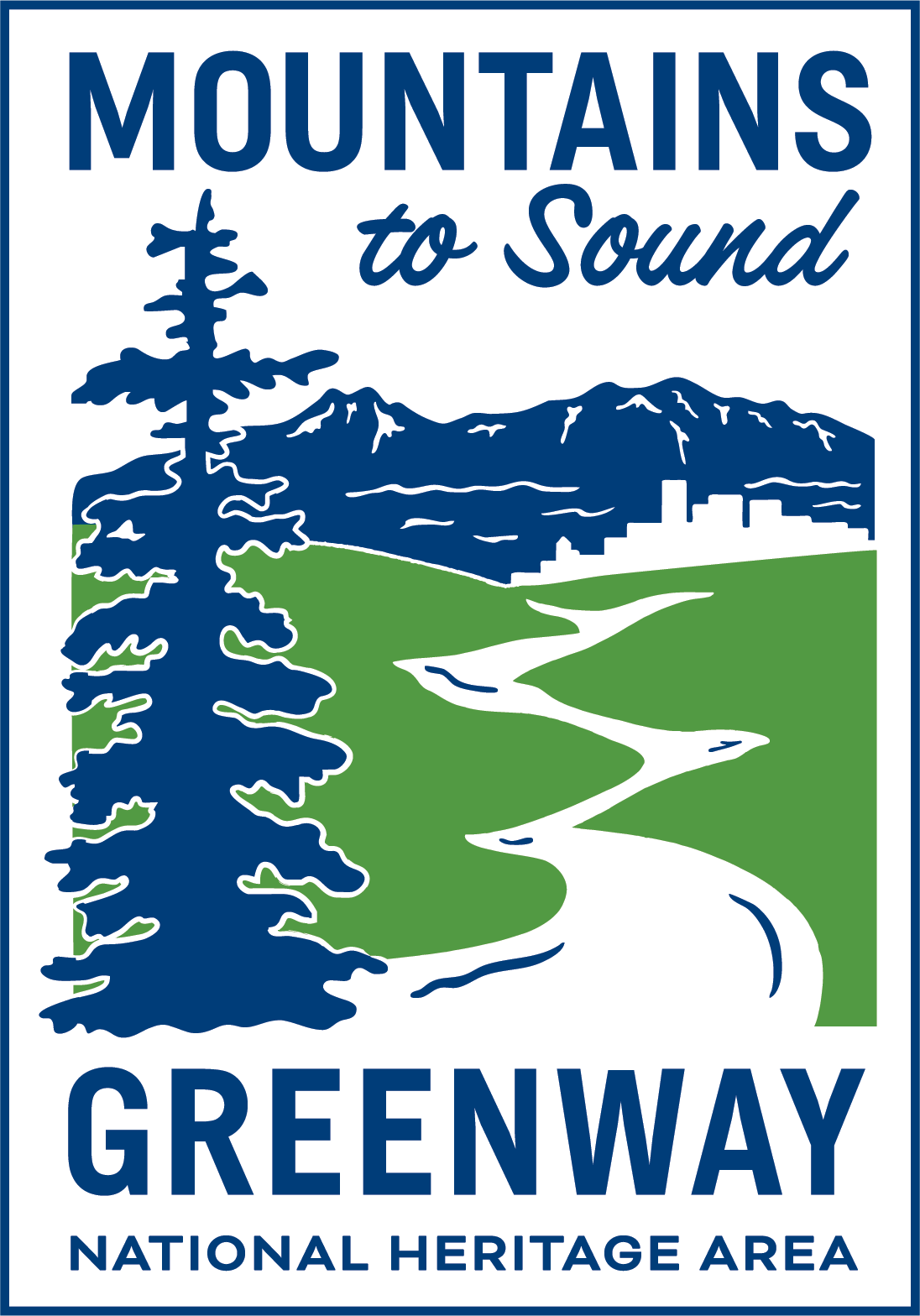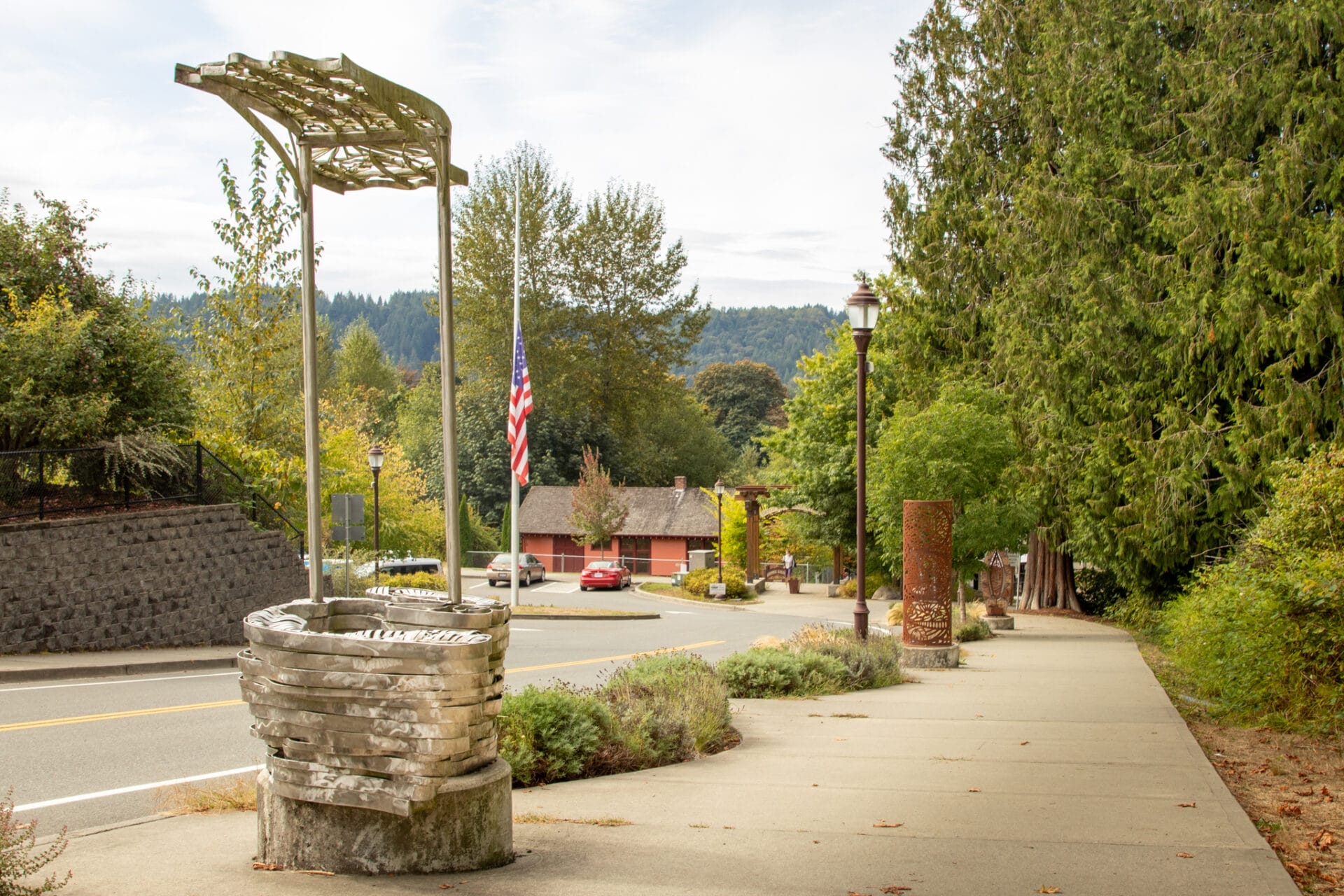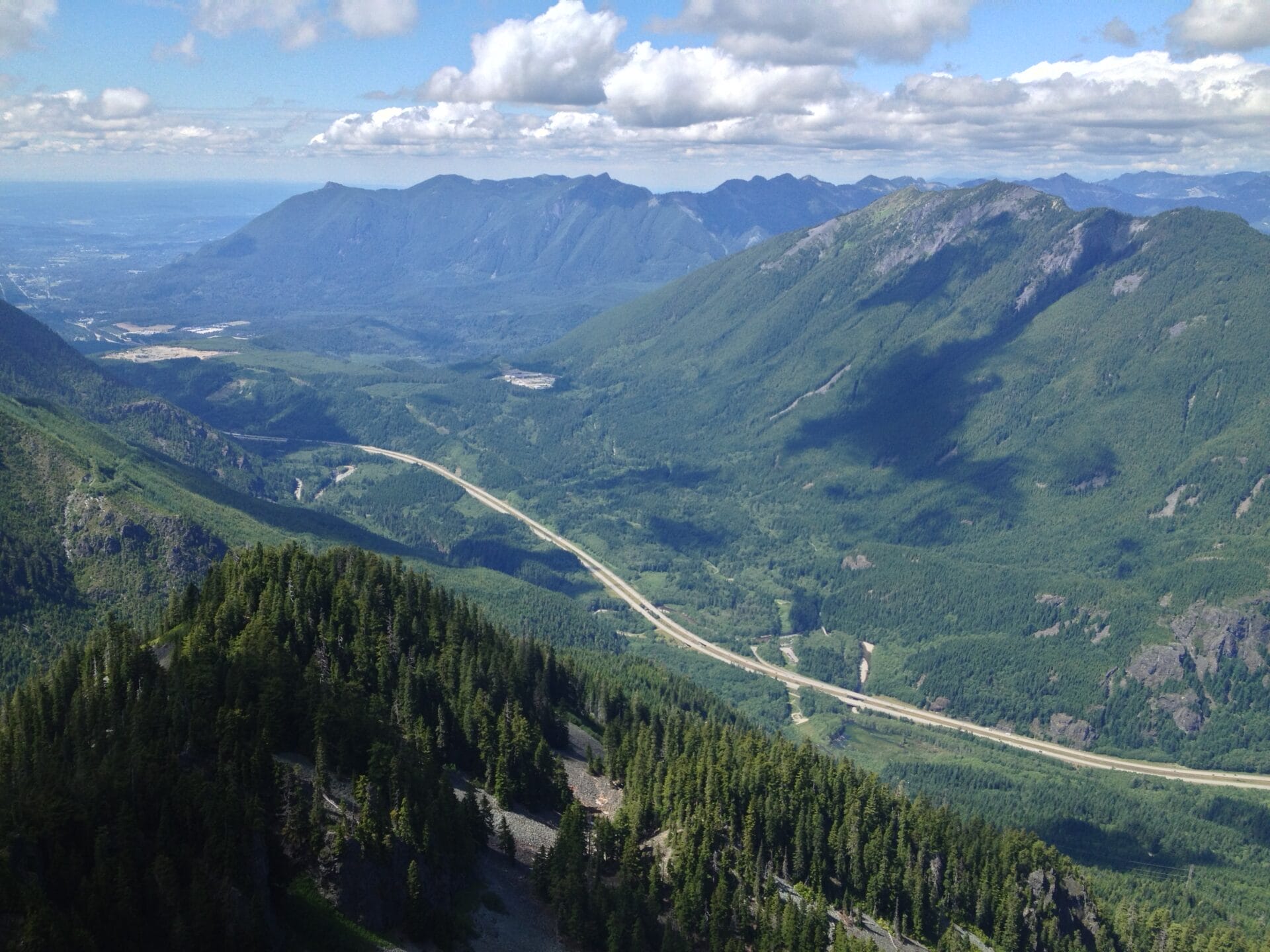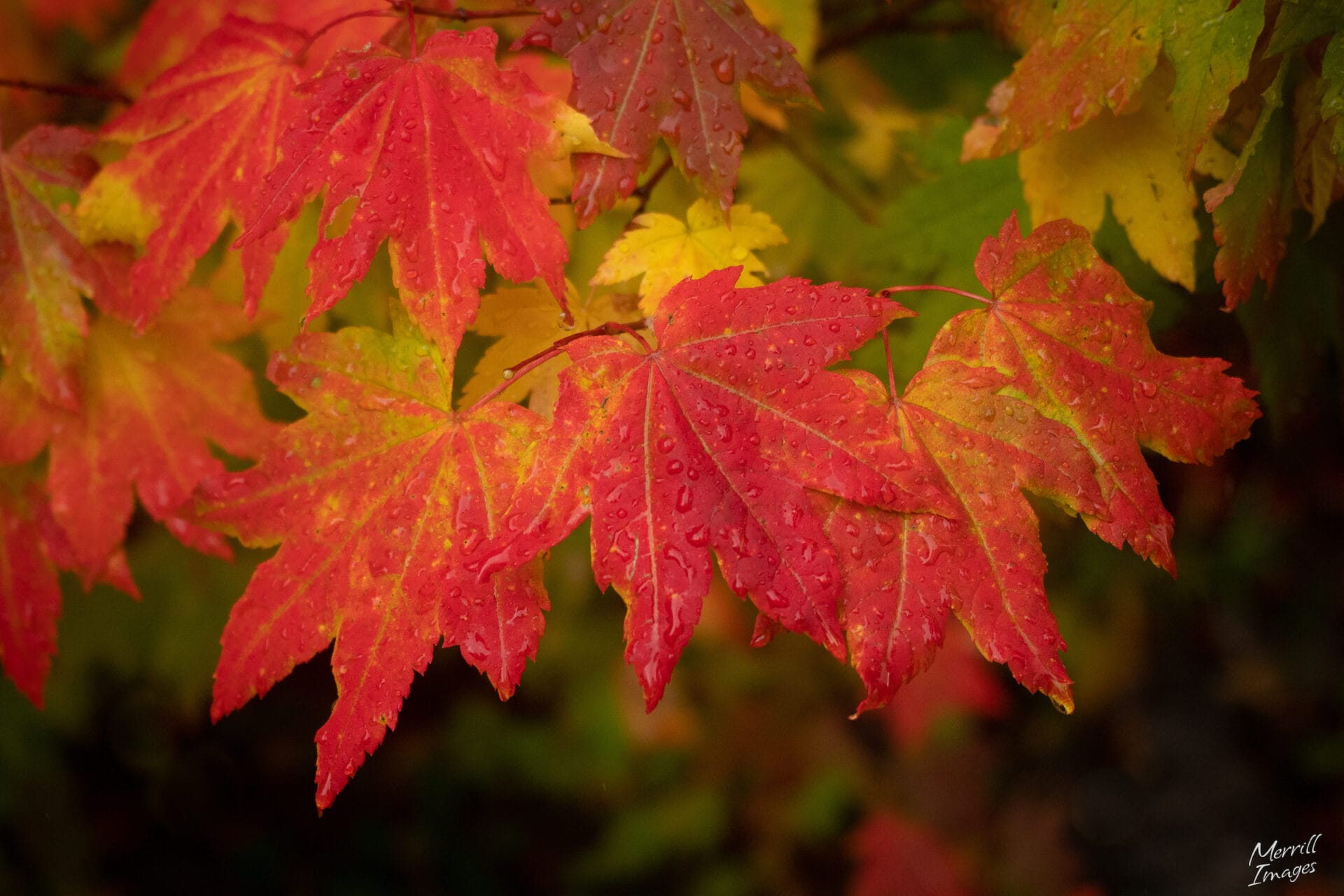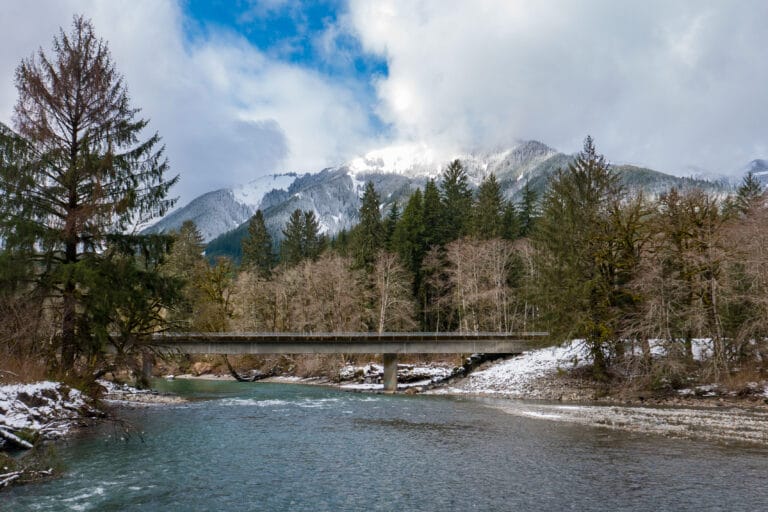Self-Guided Art Tour of Historic Duvall
Duvall’s quirky history of art, music, and creativity remains front and center in its downtown. This itinerary guides you through town and the dozens of installations from local artists.
Start your day by parking your car at Depot Park. This park hosts the historic railroad depot. Originally located right down by the river, it was donated to the City and moved to its current location. The depot also provided inspiration for the first stop in this itinerary – the park gateway.

The Depot/McCormick Gateway design was influenced by the historic swing bridge and railroad. The concrete footing and seat wall reflect the bridge supports that used to serve the swing bridge along with the supports for the bridge that followed which still stand to the north of here today. The gateway includes railroad ties and rail as well as decorative iron truss work and park signage. Read more about how the railroad created Duvall and see a photo of the old swing bridge here.
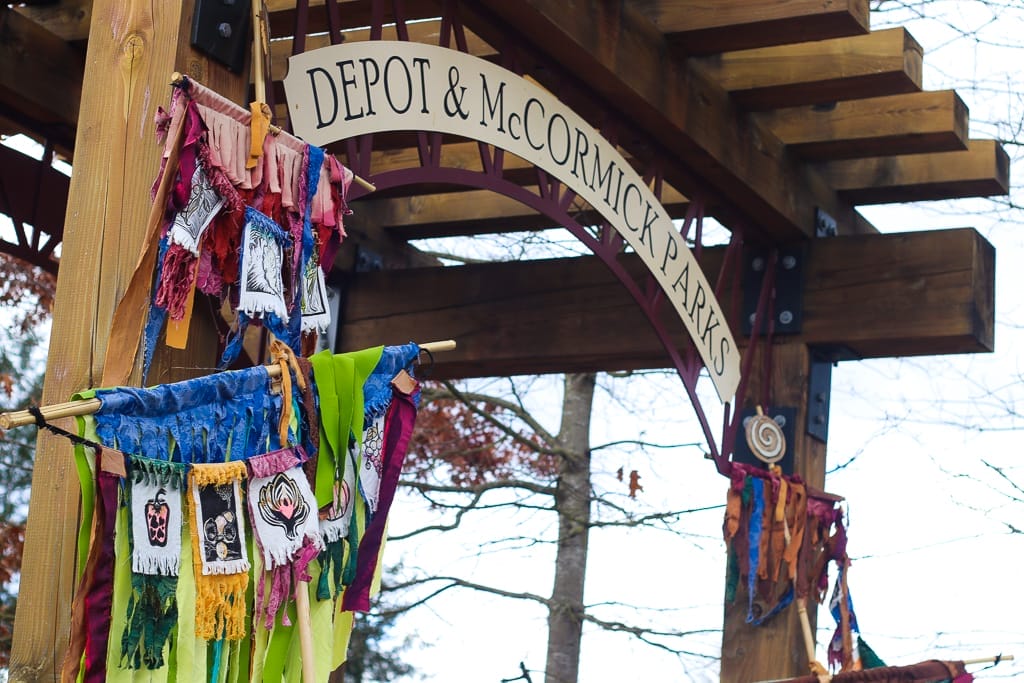
Continue up the hill to three installations. Unveiled in 2013, each of these installations tell the story of an era of Duvall’s history. The first piece called Origins, created by local artist Dan Cautrell, uses metal and textured and colored concrete to honor the early years of Duvall and the pioneering spirit that established the City. The sculpture’s canoe shape reflects the tribal roots and importance of the river. It also features natural scenes, railroad, and farming.
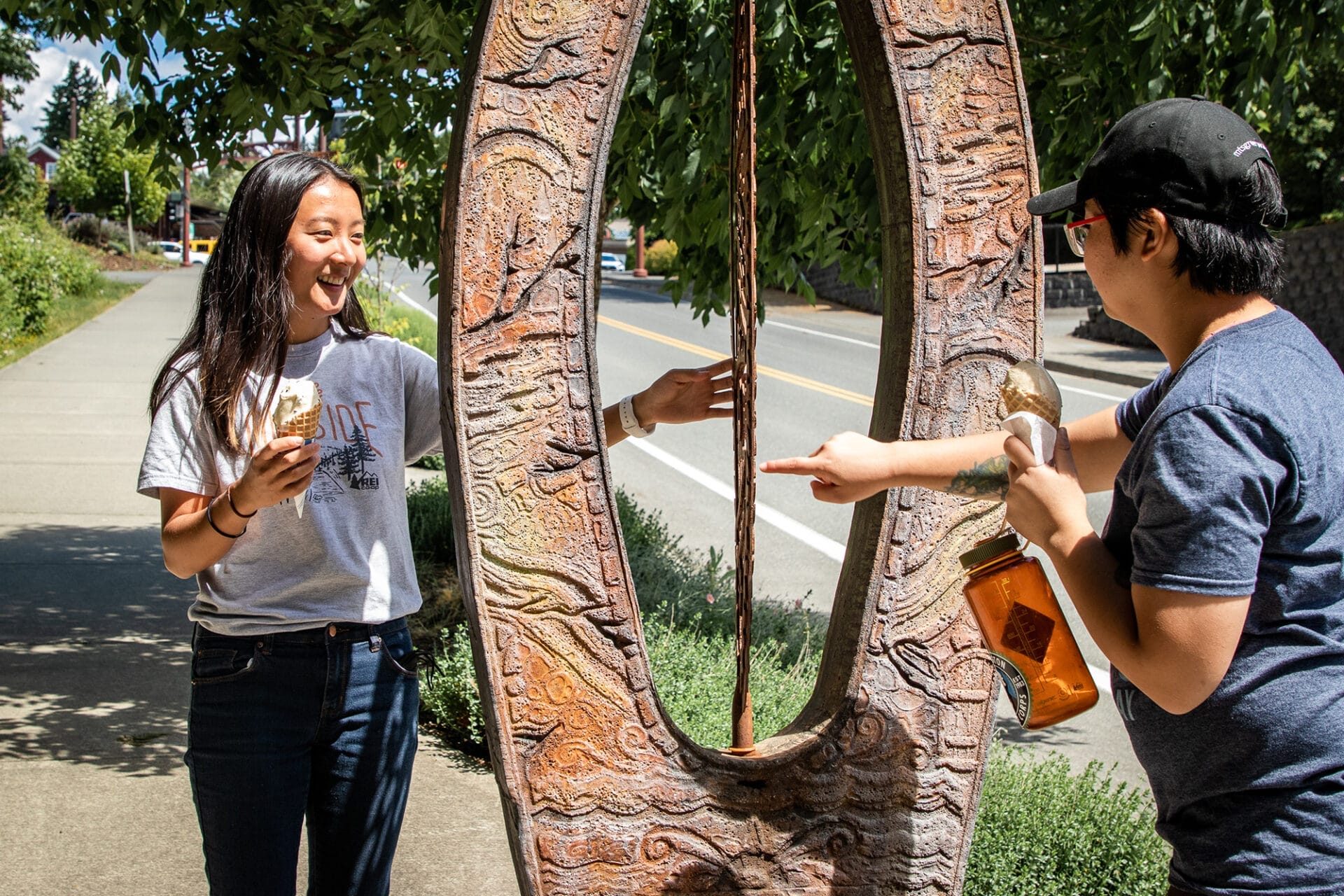
Continuing up the hill you will get to Free Spirit, a cut work metal piece by Seattle artist Brandon Zebold that portrays the mid-century lifestyle of Duvall. It reflects the farming lifestyle of the Valley during that period as well as the infamous “Piano Drop” and “hippie” movement that was so important to establishing Duvall’s artistic character.
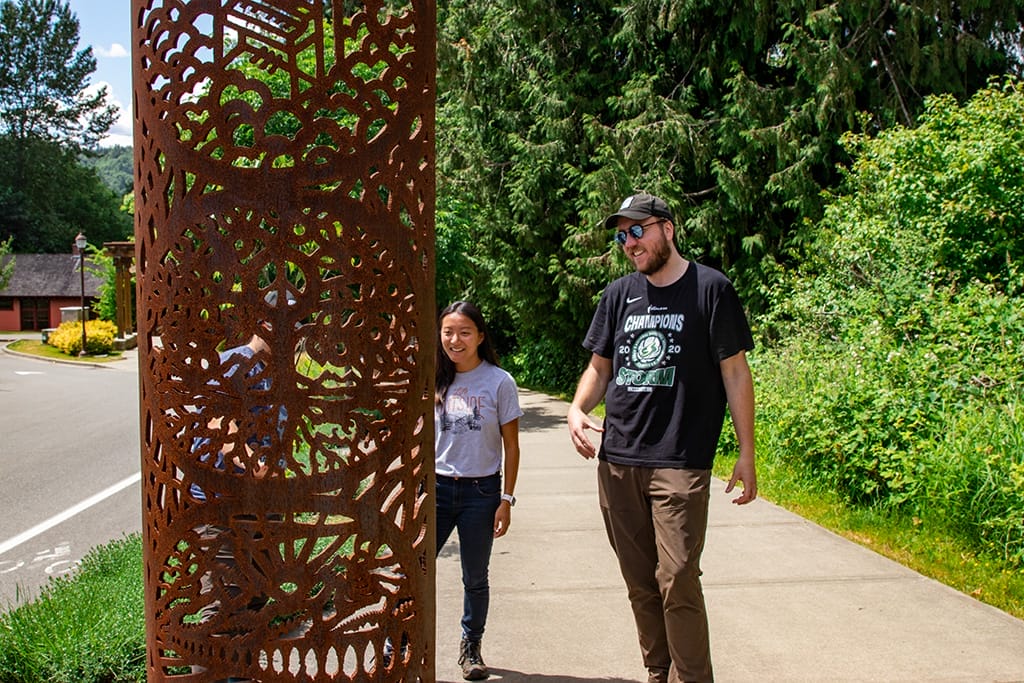
Next you will arrive at the final of the three installations: Future Bridge. This piece by artist Ken Turner represents the current lifestyle and bridge to the future with flowing ribbons of stainless steel representing the river and a canopy packed with imagery, including a microchip. The piece also provides a surprise shadow effect when the light is right.

At the top of the hill, take a left to head north on Main Street. During the reconstruction of Main Street in 2008-2009, the City integrated an artistic “river” theme visible throughout downtown, including the 18’ carved cedar planks, gateway signs, and murals that line the street. Be on the lookout for the artist-inspired benches dotting Main Street along your way. Can you find all 12?

As you walk through town, keep an eye out for the cedar planks that line Main Street. In 2011, as part of the Main Street renovation, The City of Duvall commissioned these hand-carved cedar planks to adorn light poles. The intention was to display art that helps tell the story of the area, and replace planks over time so that the story continues. In the spring of 2020, the City awarded contracts to five artists with local roots to carve new planks. Each artist spent several months designing, carving, and adding color to their cedar planks. At the base of each plank, you’ll find a QR code which you can scan to hear an audio clip from each artist.
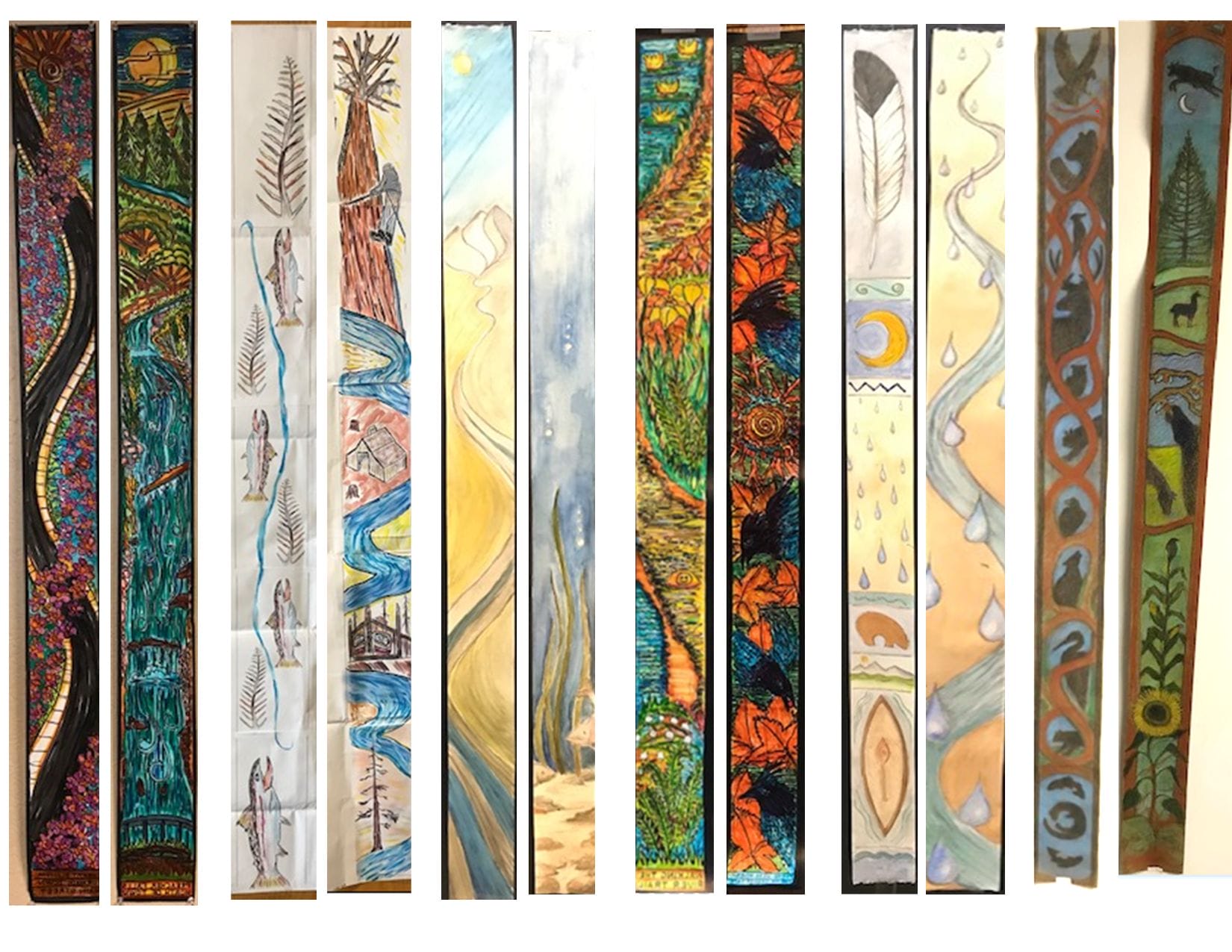
Just before Stella Street, you’ll reach Duvall City Hall. Check out the wood posts, carved by Dan Cautrell, that support the kiosk outside the building. Inside, City Hall also serves as a rotating art gallery for local artists.
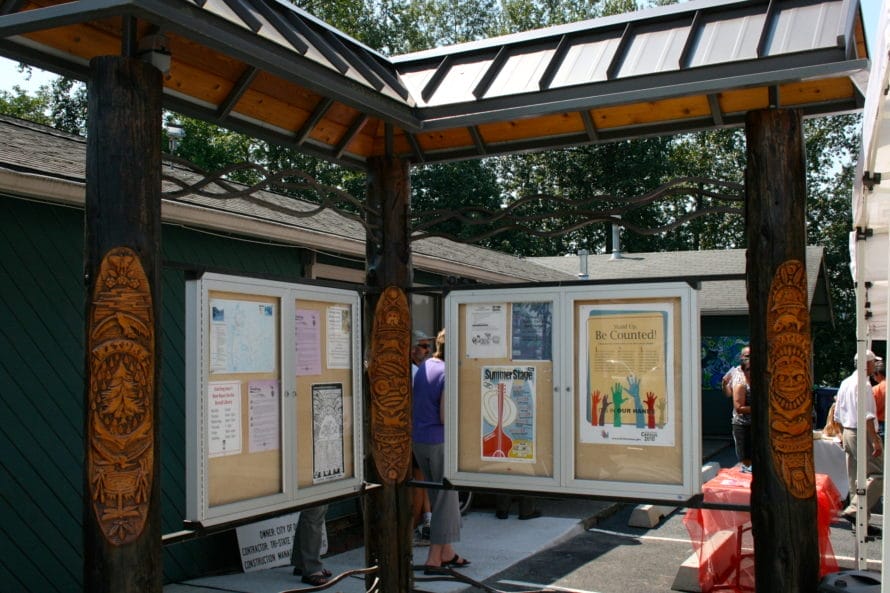
Continue along Main Street until you reach Woodinville-Duvall Road, where you’ll notice the bridge heading west towards Woodinville. Though the lack of sidewalks makes the bridge unsafe for pedestrian traffic, the next time you cross in your car look out for the four Bridge Trolls along the side rails. Created by Bruce Edwards, they offer a fun, quirky welcome to the city. Kids love the trolls!
Cross the street (with care) and head back in the direction you came, toward Depot Park. After a few blocks, you’ll reach a metal installation outside the Duvall Library. This piece, commissioned by the library, is called Sounding and was produced by Seattle artist Brandon Zebold.

Next, head inside the library to see the sculpture called Fold by nationally acclaimed artist John Grade. Derived from a rubber cast of the human body stretched over a cylindrical frame, Fold is composed of thousands of hollow wood boxes bonded by translucent resin. Made in two parts, the library displays the larger upper part. The smaller lower part is buried and organically decaying near the Superstition Mountains in Arizona. In 3-8 years, the smaller section will also be exhumed and reunited with its other half in the library. Read more about this installation here.
Leaving the library, cross Main Street at Stephens Street and continue heading south. The final two cedar planks sit on opposite sides of Main Street about 100 feet south of Ring Street.
Turn around, head back north on Main Street, and check out the upper gateway. As a companion to the lower gateway (the one inspired by the railroad), this gateway’s contemporary design represents the City’s present and future. The gateways’ design uses the Snoqualmie River and Library as the anchors. The river, the forever of the Valley, goes as far back in history as you can go. The art installations take you through different eras of Duvall’s history and ultimately lead you to its future – the Library and its design representing knowledge, technology, and advancement.
Take a left on Stephens Street to return to Depot Park. Before getting back into your car, consider heading downhill to McCormick Park. Take a seat by the Snoqualmie River to help understand the inspiration for much of the art featured throughout Duvall. Looking for more art? Many of the downtown businesses also act as rotating art galleries for local artists.

